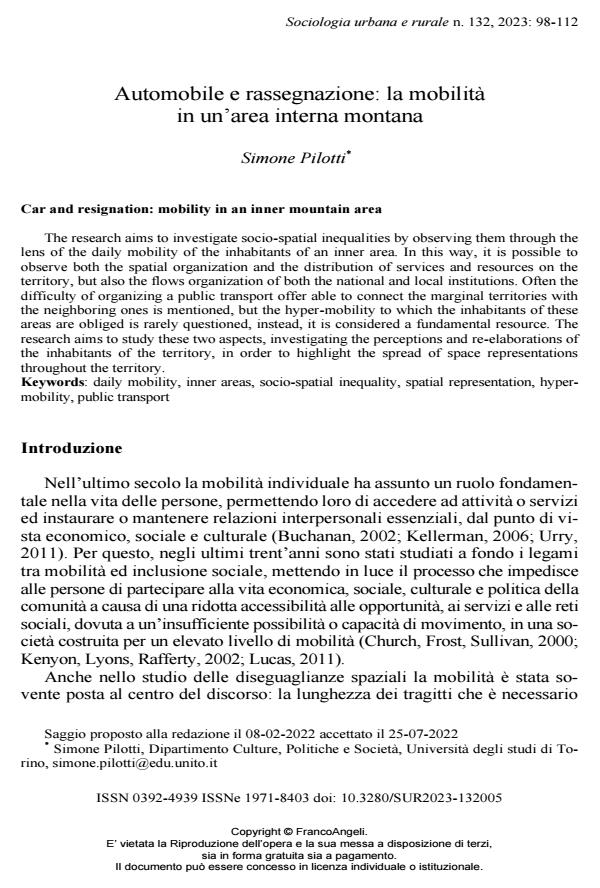Car and resignation: mobility in an inner mountain area
Journal title SOCIOLOGIA URBANA E RURALE
Author/s Simone Pilotti
Publishing Year 2023 Issue 2023/132
Language Italian Pages 15 P. 98-112 File size 378 KB
DOI 10.3280/SUR2023-132005
DOI is like a bar code for intellectual property: to have more infomation
click here
Below, you can see the article first page
If you want to buy this article in PDF format, you can do it, following the instructions to buy download credits

FrancoAngeli is member of Publishers International Linking Association, Inc (PILA), a not-for-profit association which run the CrossRef service enabling links to and from online scholarly content.
The research aims to investigate socio-spatial inequalities by observing them through the lens of the daily mobility of the inhabitants of an inner area. In this way, it is possible to observe both the spatial organization and the distribution of services and resources on the territory, but also the flows organization of both the national and local institutions. Often the difficulty of organizing a public transport offer able to connect the marginal territories with the neighboring ones is mentioned, but the hyper-mobility to which the inhabitants of these areas are obliged is rarely questioned, instead, it is considered a fundamental resource. The research aims to study these two aspects, investigating the perceptions and re-elaborations of the inhabitants of the territory, in order to highlight the spread of space representations throughout the territory.
Keywords: daily mobility, inner areas, socio-spatial inequality, spatial representation, hyper-mobility, public transport
Simone Pilotti, Automobile e rassegnazione: la mobilità in un’area interna montana in "SOCIOLOGIA URBANA E RURALE" 132/2023, pp 98-112, DOI: 10.3280/SUR2023-132005